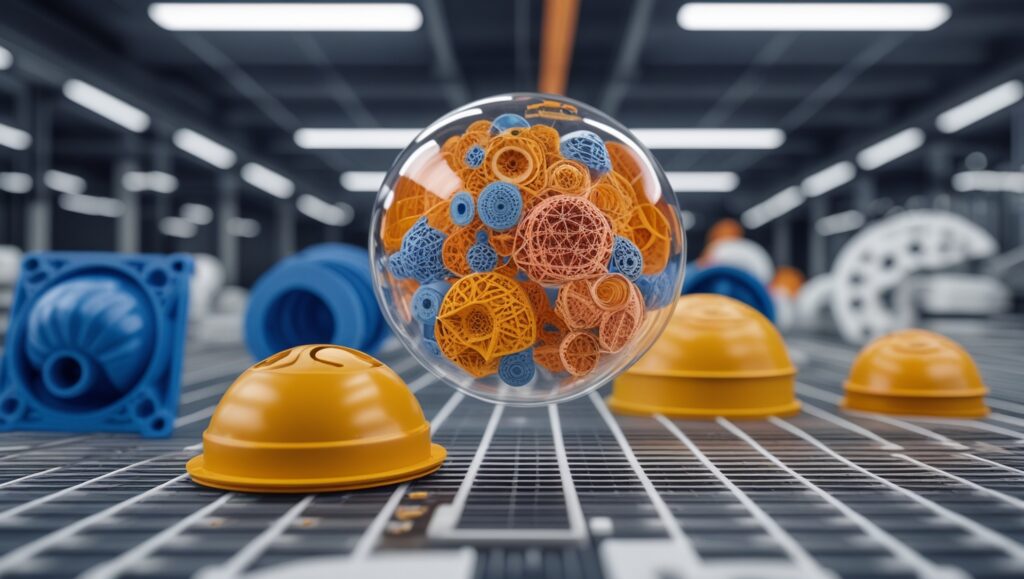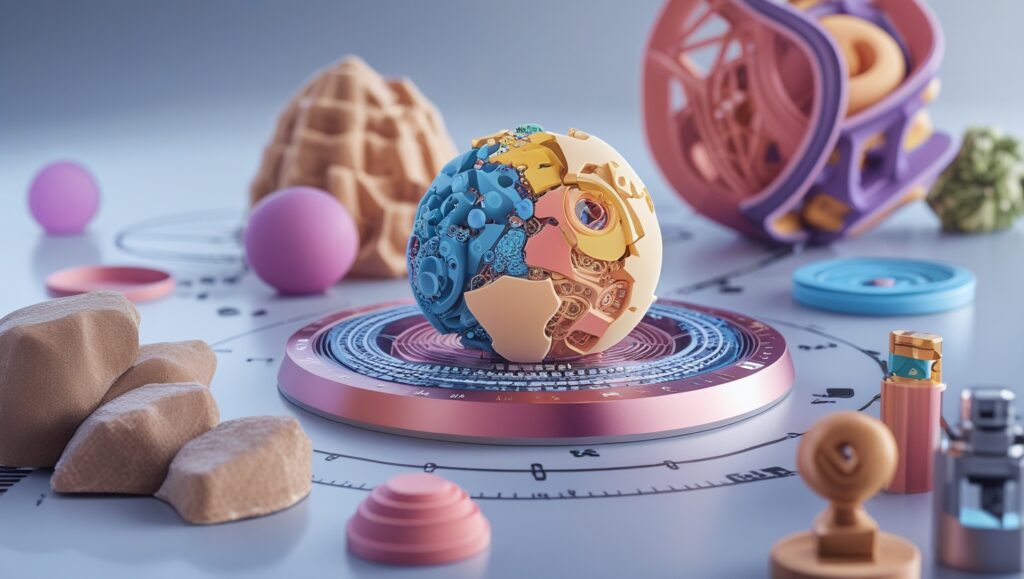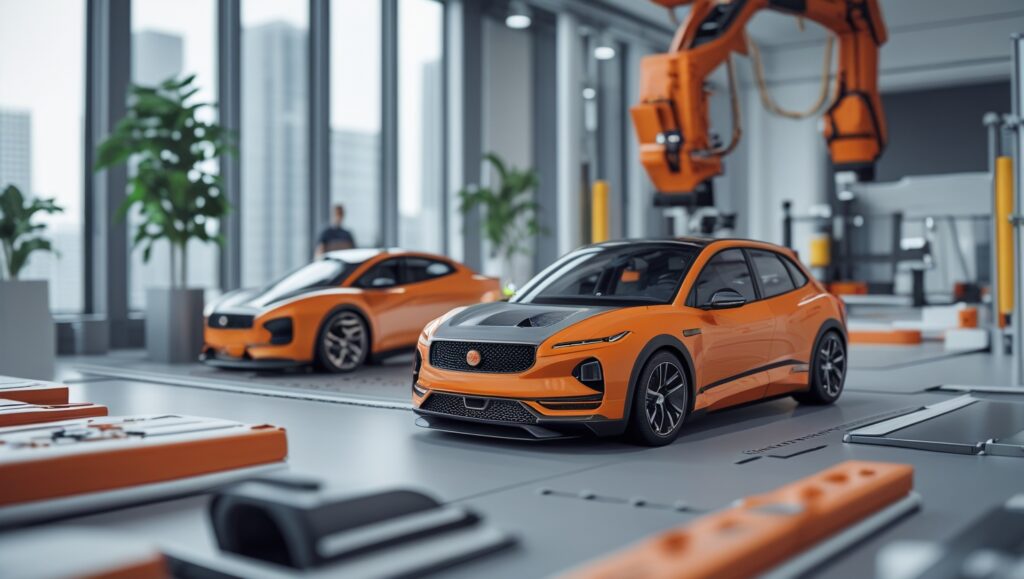In a world where speed, innovation, and sustainability are key, generative design tools redefine product development. This approach leverages AI to automate and enhance CAD modeling workflows, producing numerous optimized design options in minutes instead of days. Generative design fosters creative exploration, reduces time-to-market, and results in high-performing products.
AI-Generated Designs: The Ins and Outs

Generative design is an approach powered by AI and machine learning to create multiple design iterations for user-specified goals (weight, strength, material constraints, manufacturing processes, and so on).
Instead of manually iterating a design through CAD software, users let AI tools optimize the outcome, providing fast and high-quality results.
Generative Design Upscale CAD Workflow

- Increased Speed: Faster Innovation, Shorter Time to Market
By automating design exploration and optimization, generative design shortens development cycles. Research from McKinsey shows that designers using generative design and AI tools across different industries reduced development time by 30–50%, part weight by 10–50%, and part cost by 6–20%.
Meanwhile, 40% faster project timelines were reported from architecture firms also using AI tools.
With such advantages, generative AI speeds design, production, and time-to-market.
- Creativity Boost: Expanded Design Exploration
AI generative design allows exploration of hundreds or thousands of design variations, vastly expanding the creative and design space. Siemens notes that AI helps break through creativity barriers, exploring unconventional, organic, and optimized geometries human designers might not conceive
Engineers using AI design tools can evaluate multiple, highly efficient configurations for materials, shapes, and performance in far less time: one generative AI tool analyzed over 10,000 different design options in under an hour.
- Cost and Material Efficiency: Material and Budget Optimization
AI can help optimize part geometry to use less material, thus saving on production costs and resulting in more environmentally friendly development. A study by JB Technical Solutions Inc. also indicates how these systems make products more efficient and sustainable.
McKinsey’s research further quantifies savings, noting generative design reduces part weight by up to 50% and lowers part cost by up to 20%, driving business benefits.
- Sustainability and Precision: Eco-Conscious Design
Generative design promotes sustainability through minimal material use and waste elimination. It also lets engineers develop parts that are high-performing, resource-efficient, and manufacturable — important qualities in today’s sustainability-conscious market
A report from Autodesk-backed OEMnew shows AI-based engineering design systems and AI copilots increase feasibility rates by 30% and improve design accuracy by 32%, thus mitigating potential manufacturing errors
SEO Sandwich
- Automation: Focusing on Strategic Thinking
Generative design reduces CAD engineers’ manual labor by automating several CAD tasks. Designers can then spend more time thinking strategically and generating innovative ideas. Instead of manually iterating, they can use AI-generated data to focus on analyzing solutions and optimizing key performance outcomes.
Generative Design Market Growth and Adoption

Generative design is hardly an obscure or experimental concept. Adoption of generative AI in industrial design is surging:
Forecast by Precedence Research shows the market size for generative AI in industrial design will expand from around USD 255 million in 2024 to USD 2.3 billion by 2034, at a CAGR of about 24.6%.
Similarly, another report predicts USD 1.2 billion by 2025 and USD 4.8 billion by 2032, at a CAGR of 22.5%.
Moreover, according to research firm Technavio, generative AI in industrial design is expected to grow at a CAGR of 35.3% from 2024 to 2029.
This growth is attributed to AI copilots embedded in CAD software, PLM, and other digital design and manufacturing tools.
Generative Design: Case Studies in Action
McKinsey: A die-cast support bracket for a power-tool manufacturer was redesigned using generative design for weight and cost reduction, achieving a 26% weight reduction and an 8% cost saving without impacting functionality
Architecture Firms: A generative AI solution reduced a project’s timelines by 40%
Feasibility and Accuracy: AI-based engineering design systems and AI copilots increased feasibility rates by 30% and improved design accuracy by 32% in an example, thus reducing manufacturing errors.
Mettler Design + Generative Design
At Mettler Design, we stay on the leading edge of all that AI has to offer, specifically integrating generative design tools and techniques into our CAD workflows:
- Rapid iteration of design concepts: Mettler Design engineers can input performance criteria, then automatically generate and assess multiple design options, often in minutes instead of days.
- Material optimization: We use data from AI models to provide our customers with designs that use the least amount of material possible, while still achieving the required performance, thereby reducing cost and improving sustainability.
- Optimized for decision-making: Human designers consider real-world factors like manufacturing feasibility, aesthetics, and cost, then make final recommendations based on AI-generated results.
- Tailored AI tools: Generative AI design tools are selected and used based on the goals and needs of each project.
Empower Your Product Development Journey
Are you ready to unlock AI’s vast potential for your product development and design work? Look no further than Mettler Design.
Get in touch now for your free consultation and see how generative design tools can help Mettler Design team members unleash creativity, cut costs, and bring your product vision to life faster than ever before.

